InvivoGen’s Reviews
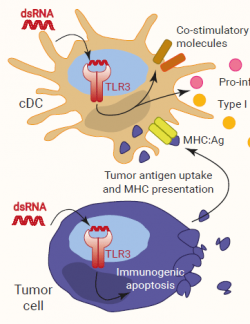
Innate Immunity
TLR3: racing for vaccine advantages
Toll-like receptors (TLRs) play a pivotal role in the initiation of prompt innate immune defenses, as well as in the activation of adaptive immune cells for enhanced and memory responses. Thus, TLR agonists are attractive candidates for vaccine adjuvants and cancer therapeutics
Previous reviews
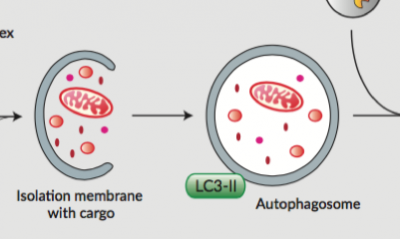
Innate Immunity
Autophagy and Innate Immunity
Autophagy is one of the three principal mechanisms used by cells to sequester, remove and recycle waste, the others being proteasomal degradation and phagocytosis. In autophagy, macromolecules in the cytosol are engulfed in a newly formed phagocytic body and subsequently digested in a special lysosome that releases the resultant metabolites back into the cytosol.
Autophagy, often...
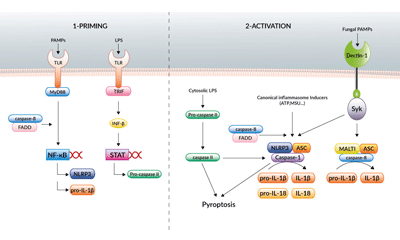
Innate Immunity / Inflammasome
Inflammasome activation: a matter of caspases
Inflammasomes are multimeric protein complexes that are crucial for host defense to infection and endogenous danger signals. They promote the secretion of the pro-inflammatory cytokines interleukin (IL)-1β and IL-18 and cause a rapid and pro-inflammatory form of cell death called pyroptosis.

Innate Immunity / STING / PRR
Deciphering the STING Paradox
STING (stimulator of interferon genes), alternatively known as MPYS, TMEM173, MITA and ERIS, is a key sensor of cytosolic nucleic acids.
In the past year, an incredible amount has been revealed on the biology of STING. As the studies were published, the complexity of STING became apparent. STING, initially thought to serve solely as an adaptor protein for mediating signaling by...
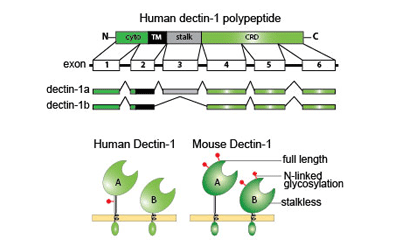
Innate Immunity / PRR
β-Glucans: bittersweet ligands of Dectin-1
β-Glucans have been consumed for many centuries for their healing properties. Since the discovery of their immunomodulating capabilities, about five decades ago, β-glucans have attracted a great deal of attention in the biomedical arena.
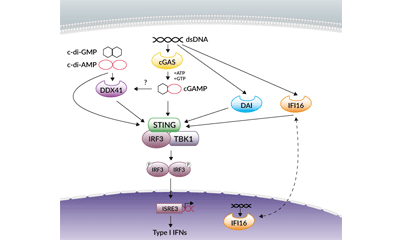
Innate Immunity / PRR / STING
cGAS - The long awaited cytosolic DNA sensor?
The detection of viral and bacterial nucleic acids by the innate immune system has become an area of intense research.
Cytosolic DNA is well-known to induce the production of type I interferons (IFNs) through the STING-TBK1-IRF3 axis but the mechanism whereby it is sensed remains elusive.
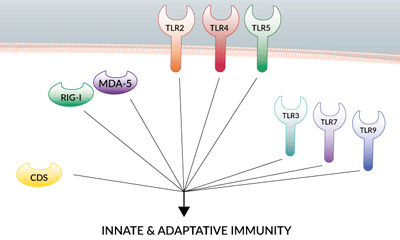
Innate Immunity / PRR
Multi-TLR Agonists: Potential for Therapeutic Success
Toll-like receptors (TLRs) are the best studied pattern recognition receptors (PRRs) and their importance in stimulating innate and adaptive immunity is now well established.
TLRs are sensors of microbial components as well as host-derived endogenous molecules released by injured tissues. TLRs play a critical role in defense against invading pathogens but are also involved in other...
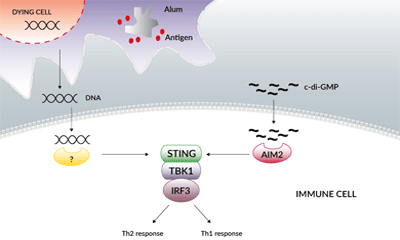
Innate Immunity / STING / Vaccination
STING in Vaccine Adjuvants
Adjuvants enhance and direct the adaptive immune response to vaccine antigens through various mechanisms, some of which are still poorly understood. Recently, STING and more generally the host nucleic acid sensing machinery were shown to play an essential role in vaccination.
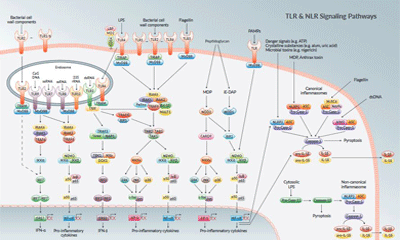
Innate Immunity
Innate Immunity
The innate immune system is an evolutionarily conserved system acting as a first-line of defense against invading microbial pathogens and other potential threats to the host.
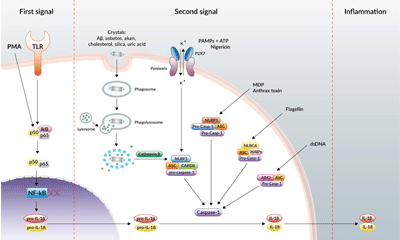
Innate Immunity / Inflammasome
Inflammasomes
The nucleotide-binding oligomerization domain-like receptor (NLR) family of proteins is involved in the regulation of innate immunity responses.
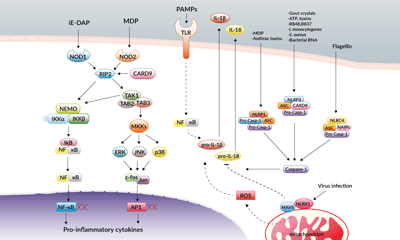
Innate Immunity / PRR
Nod-Like Receptors
The cytosolic NOD-Like Receptors (NLRs, also known as CATERPILLERs, NODs or NALP/PAN/PYPAFs) are nucleotide-binding oligomerization domain containing receptors.



